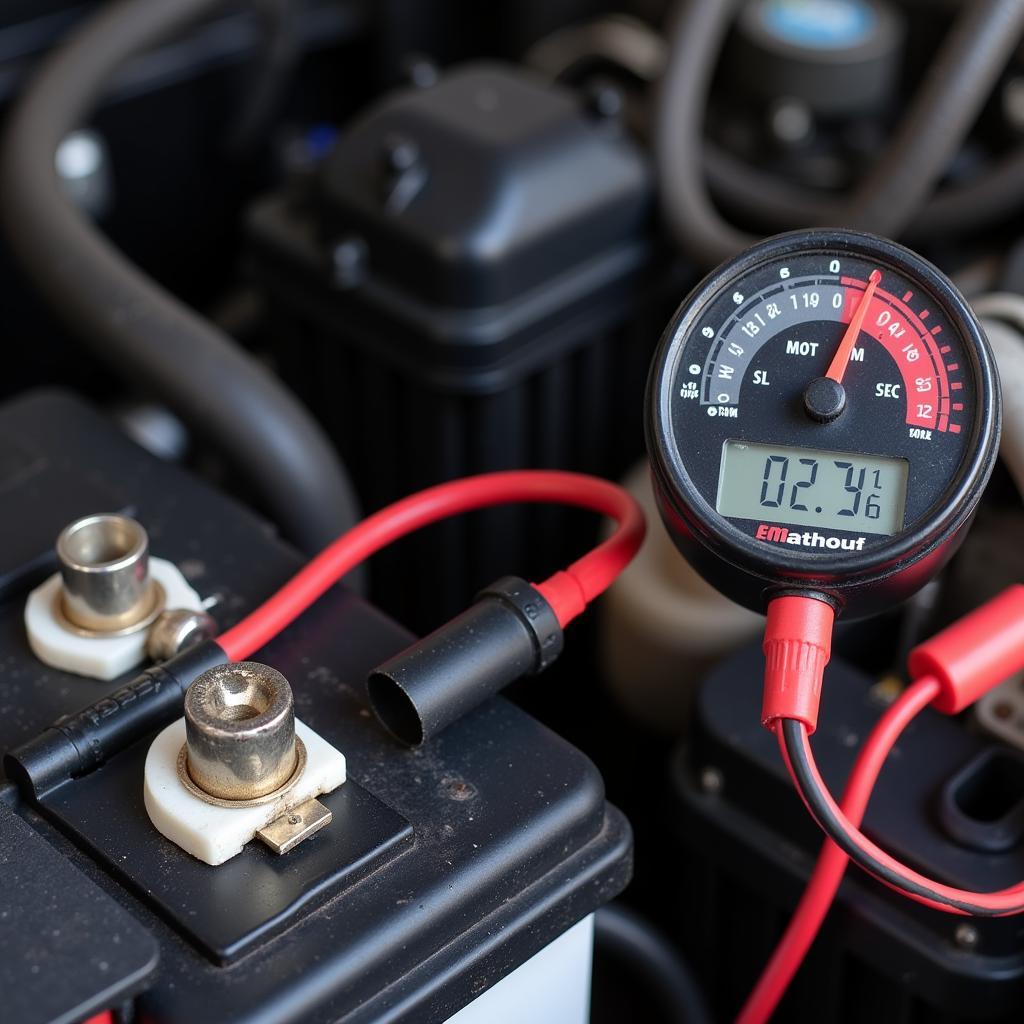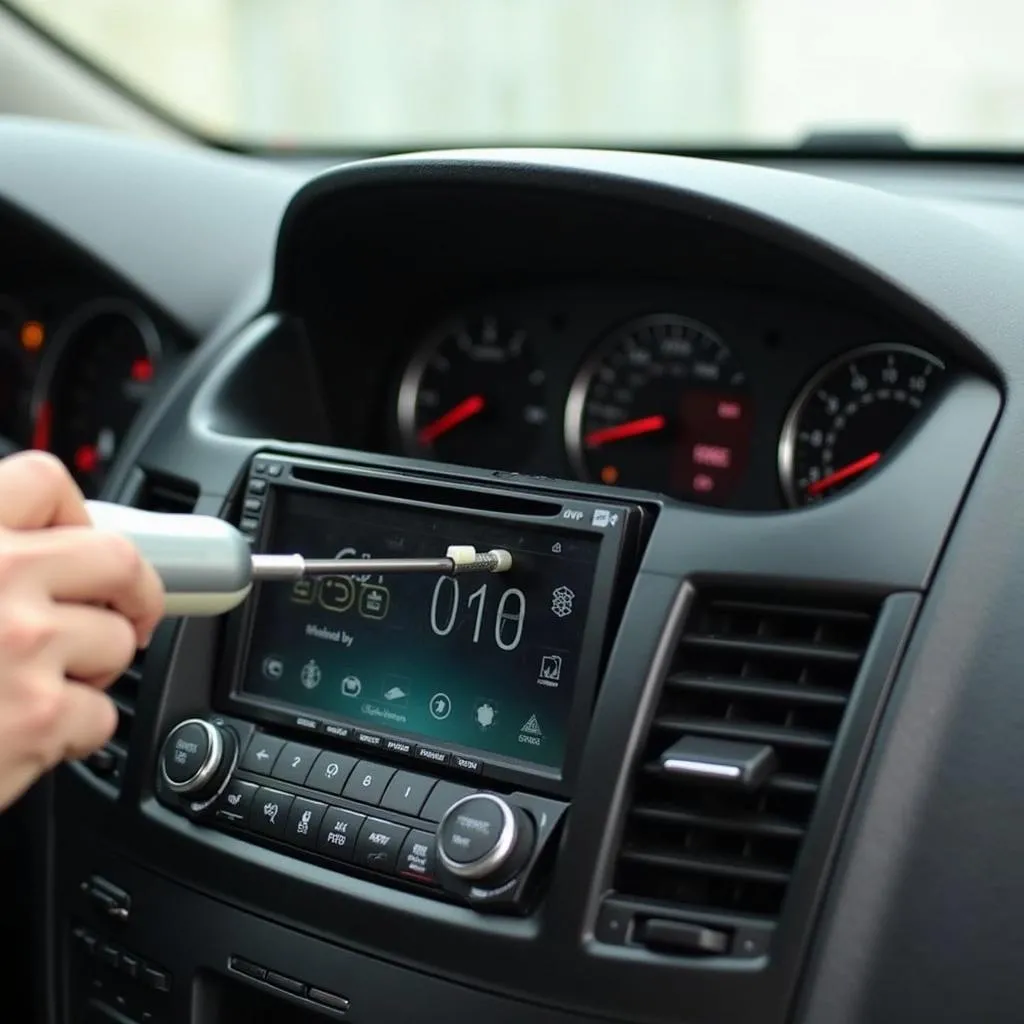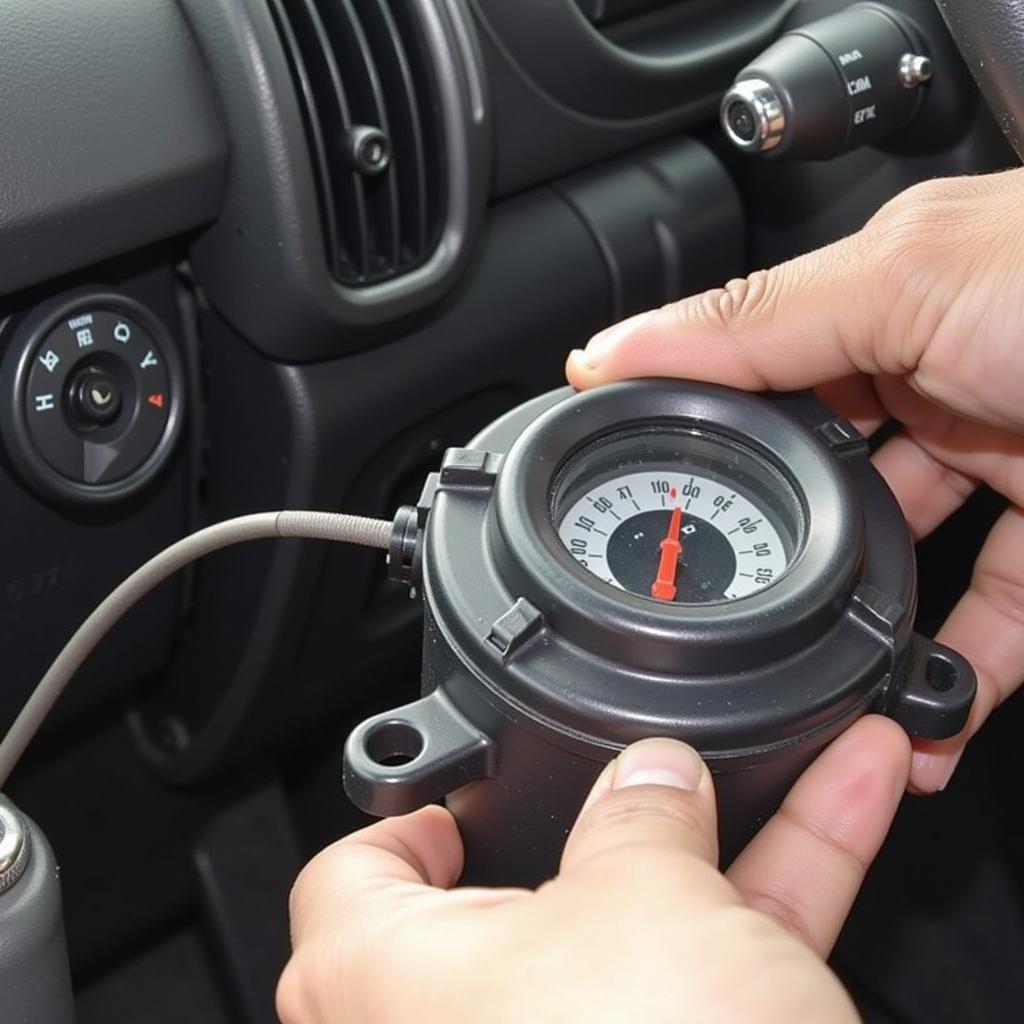A dead car battery can be frustrating, but understanding the cause of battery discharge can save you time and money. This guide delves into the common reasons behind battery drain, from parasitic draws to faulty alternators, empowering you to troubleshoot and prevent future issues.
Common Culprits Behind Car Battery Discharge
Several factors can contribute to a car battery losing its charge. Identifying the root cause is crucial for effective resolution.
- Parasitic Draw: Even when your car is off, certain electrical components continue to draw power, leading to a slow discharge. This “parasitic draw” can stem from faulty wiring, malfunctioning modules, or even interior lights left on.
- Faulty Alternator: The alternator recharges the battery while the engine is running. A failing alternator can’t adequately replenish the battery, ultimately leading to a discharge.
- Extreme Temperatures: Both extreme heat and cold can affect battery performance. Heat can accelerate chemical reactions within the battery, shortening its lifespan. Cold temperatures can thicken the battery’s electrolyte, reducing its ability to hold a charge.
- Old Age: Like any other component, batteries have a limited lifespan. Over time, the battery’s internal components degrade, reducing its ability to hold a charge.
- Short Trips: Short trips don’t provide the alternator enough time to fully recharge the battery, especially after using power-hungry features like heated seats or the defroster.
- Corroded Terminals: Corrosion on battery terminals can hinder the flow of electricity, preventing the battery from charging properly and eventually discharging.
- Human Error: Leaving lights on, the radio playing, or accessories plugged in can drain the battery, especially in older vehicles.
Diagnosing the Cause of Battery Discharge
Pinpointing the cause of battery discharge often involves systematic troubleshooting.
- Visual Inspection: Start by visually inspecting the battery terminals for corrosion. Clean them with a wire brush and baking soda solution if necessary.
- Parasitic Draw Test: This test involves disconnecting the negative battery cable and placing a multimeter in series with the cable and the battery terminal. A reading higher than the specified value indicates a parasitic draw.
- Alternator Test: A simple voltmeter test can determine if the alternator is charging correctly. With the engine running, the voltage across the battery terminals should be around 13.5-14.5 volts.
- Battery Load Test: A load test checks the battery’s ability to hold a charge under load. This test is typically performed using a specialized battery tester.
 Performing a Car Battery Alternator Test
Performing a Car Battery Alternator Test
How to Prevent Future Battery Discharge
Preventing battery discharge involves a combination of good maintenance practices and mindful usage.
- Regularly clean battery terminals to prevent corrosion.
- Limit short trips and ensure the alternator has enough time to recharge the battery.
- Avoid leaving lights, accessories, or the radio on when the car is off.
- Have your battery tested regularly, especially if it’s more than a few years old.
- Consider using a trickle charger during periods of inactivity, particularly in extreme temperatures.
are triumph street twin equipped with an anti theft
“Regular battery testing is crucial for preventing unexpected discharges. It allows you to identify potential issues before they become major problems,” advises John Smith, a certified automotive electrical technician.
Conclusion
Understanding the cause of battery discharge is key to maintaining a reliable vehicle. By following the diagnostic tips and preventative measures outlined in this guide, you can minimize the risk of encountering a dead battery and extend the lifespan of your car’s electrical system. Regular maintenance and mindful usage can significantly reduce the chances of experiencing the frustration of a discharged battery.
how to make bike anti theft alarm
“Addressing parasitic draws promptly can prevent long-term battery damage and ensure reliable starts,” adds John Smith.



